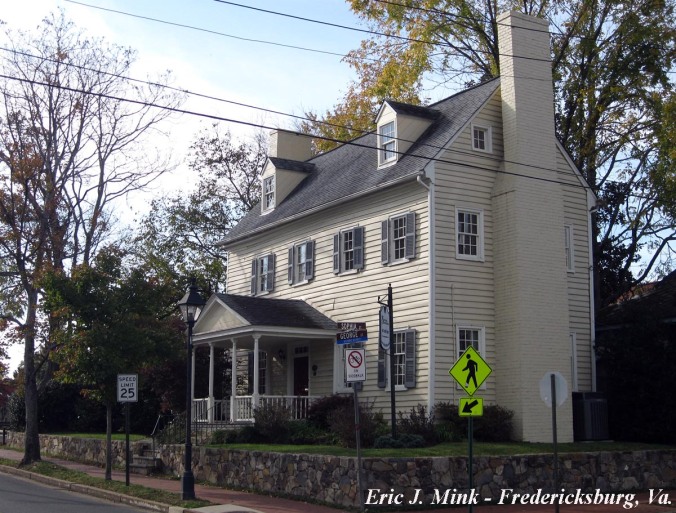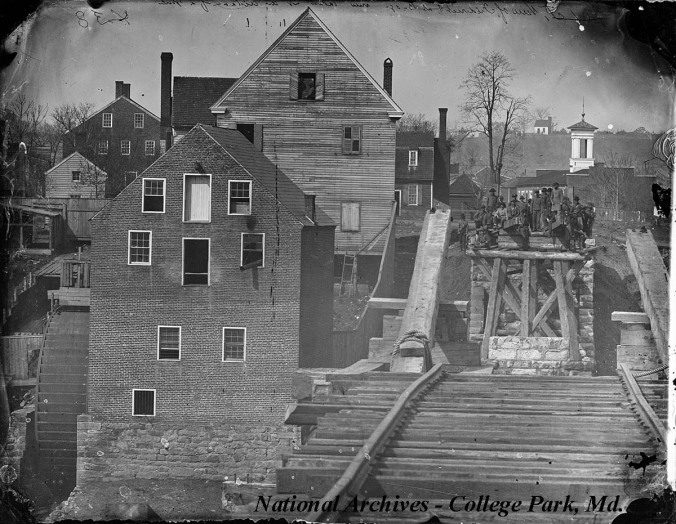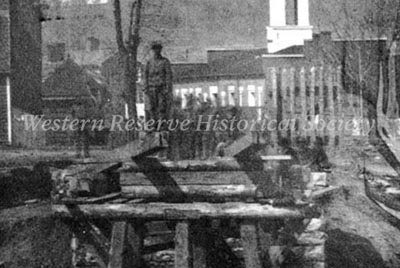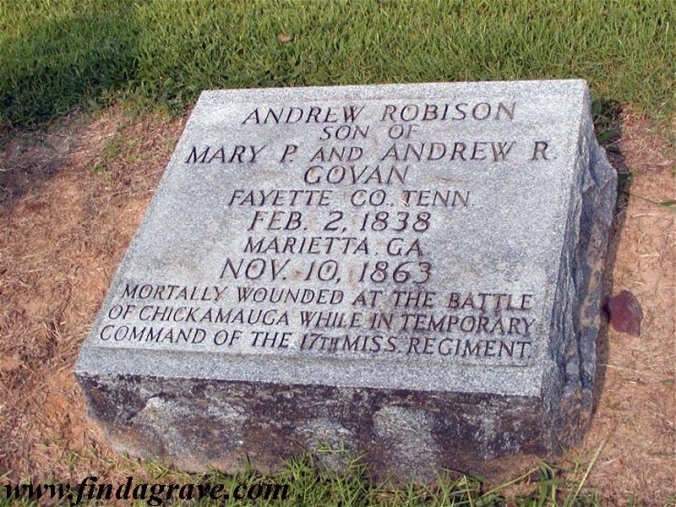From Eric Mink:
This post is adapted from an article I authored for Volume 10 (2011) of Fredericksburg History & Biography, an annual publication of the Central Virginia Battlefields Trust.
It is nearly impossible to open a book about Civil War Fredericksburg without seeing the photo of Confederate soldiers posing on the ruined railroad trestle along the Rappahannock River. The photo represents one of only two instances in which a Northern artist photographed as his subjects non-captive Confederate soldiers of the Army of Northern Virginia in the field. (The other instance involved Confederates marching through Frederick, Maryland.) That alone makes it an unusual image, yet the ability to identify the previously anonymous soldiers makes this photo even more remarkable.
The Union photographer captured this scene from the north bank of the Rappahannock River. The Confederate soldiers stand on the south bank with the river flowing between the artist and his subjects. They are on the literal front line of the war. This is a location that should be hostile, yet the Confederates don’t appear to pose a threat. Their casual pose and the absence of visible weapons suggest an almost friendly demeanor. We know that the site of the ruined railroad bridge was a place where the opposing pickets and outposts gathered to fraternize, exchanging newspapers as well as insults. (For an earlier discussion of this location, see John Hennessy’s post here.) When the photographer appeared at the bridge, we can assume some communication must have taken place between the cameraman and the Confederates. The relaxed gathering at the far end of the bridge suggests cooperation between the man behind the camera and his subjects.
Many of us have studied this image in great detail. We know its location. We can see in the distance the buildings, Willis Hill cemetery and defenses upon Marye’s Heights. We even know the name of the photographer – Captain Andrew J. Russell of the United States Military Railroads. (At least one historian has suggested that the photographer may have been Egbert Fowx, Russell’s mentor). What we have not known, however, are the identities of the figures on the far side of the river. We can’t help but wonder who these men are that posed so calmly for a Yankee cameraman along a boundary between the warring armies? To date, no diary or letter has been found, by either a Union or a Confederate soldier, that recalls what must have been an event worth chronicling, or at the very least worth mentioning.
The original image resides in the National Archives in College Park, Maryland. It provides no information about the Confederate soldiers. When published, captions for this photograph often claim that the men at the far end of the ruined trestle are members of Brigadier General William Barksdale’s Brigade of Mississippians. This is a logical assumption, as Barksdale’s regiments spent much of the winter of 1862-1863 stationed in the town of Fredericksburg. Although such identification makes sense, until recently no corroborating evidence has been found to back it up.
In 2004, the Center for Civil War Photography held its annual seminar in Fredericksburg. One of the speakers was John Kelley of Poughkeepsie, New York. In a discussion with John, he stated that variant views of this photograph existed in the collection of the Western Reserve Historical Society in Cleveland, Ohio. A trip to Cleveland located these variant views and even more exciting was the discovery that one of the images provided a clue as to the identity of one of the men standing on the bridge.
The two variant views are taken from almost the exact same angle as the photo at the National Archives. Both variants are large format 8” x 6” prints mounted on heavy paper stock. The difference between the images is the placement of the Confederate soldiers. In one of the variant views, a lone Confederate soldier is standing out on the end of one of the trestle’s railroad timbers. The rest of the Confederate soldiers are barely visible in the background. On the mount for this image is written in pencil “Fredericksburg and Rebel Sergeant.” That’s not really much identification. The second variant view, however, provides more useful information to identify the Confederate soldiers posing for the camera.
The second of the photos at the Western Reserve more closely resembles the image housed at the National Archives. Although the Confederate soldiers are gathered close the edge of the trestle, they are arranged differently. In this second variant view, the lone Confederate officer is standing in the center of the group with his arms folded and some distance between him and the gathered crowd. On the paper mount for this photo are some handwritten notations. The inscription that draws immediate attention is the one that reads: “Fredericksburg + rebel capt. Govan of the Battery that repulsed Burnsides April/63.” A look through the Confederate army rosters fails to find a Captain Govan who served in the artillery of the Army of Northern Virginia. There was, however, a Captain Govan who served in Robert E. Lee’s infantry and served in a significant capacity during the December 1862 Battle of Fredericksburg.
At 24-years-old, Andrew Robison Govan hailed from a respected southern family. His father and namesake served in both the South Carolina and United States Houses of Representatives. Two brothers also served in the Confederate Army, one of whom, Daniel, rose to the rank of brigadier general and commanded a brigade in the Army of Tennessee On December 11, 1862 Captain Andrew Govan commanded Company B of the 17th Mississippi Infantry. With his company and elements of three other regiments, Andrew resisted the Union crossing of the Rappahannock River at the town’s wharves. His actions, like those commanding the Confederate defense at the other crossings, bought Lee time to form a strong defense along the heights west of town. In reporting on the battle, Andrew’s regimental commander noted his “gallantry and unusual firmness.” General Barksdale mentioned Andrew in his report of the battle, referencing his exhibition of “coolness and courage.”
Andrew seems to have been an officer that had the confidence of his superiors. His Compiled Service Record is full of endorsements for promotion. Barksdale noted that Andrew displayed “peculiar powers for commanding men, and at once wins their confidence and respect.” Brigadier General Winfield S. Featherstone referred to Andrew as a “gallant” and “skillfull” officer. Just as Andrew impressed those around him in the army, he also appears to have been a favorite with the ladies of Fredericksburg.

The Wells House at 818 Sophia Street in Fredericksburg. Andrew spent much time here visiting Mary “Mamie” Wells.
The 17th Mississippi and Barksdale’s Brigade spent the bulk of the winter of 1862-1863 quartered in Fredericksburg, where they picketed the river and secured the town. This gave the men ample time to become acquainted with the civilians that remained in Fredericksburg. Calling on the single women of town was a pleasant diversion from military duties. A friend of Andrew’s wrote home, asking that Andrew’s mother be warned “that she not be surprised if at the expiration of the war, her son, the Captain should bring home with him from Virginia, a bonny bride, he seems so completely fascinated.” Surviving documents indicate that two of the women that Andrew called upon that winter were Mary Caldwell and Mary “Mamie” Wells. It was the later young lady that appears to have captured Andrew’s heart, as her father later wrote that “Capt. Govan was Mamie’s beau.”
Andrew never received his promotion. He served with the 17th Mississippi Infantry through the Second Battle of Fredericksburg and fought in Joseph Sherfy’s peach orchard outside Gettysburg, Pennsylvania. Andrew’s final battle came on September 20, 1863, when he fell at the head of his company along the slopes of Snodgrass Hill during the Battle of Chickamauga. A severe wound to a leg necessitated amputation. Andrew succumbed to the trauma and died in Marietta, Georgia on November 10, 1863. He is buried in Hillcrest Cemetery in Holly Springs, Mississippi. In Fredericksburg, Mary Caldwell remembered Andrew with fondness. Her diary entry for June 2, 1865 reads:
“I have been thinking a great deal about poor Captain Govan. He was one of my favorites, for I have always counted him one of Nature’s noblemen. I hope he is in Heaven enjoying the fruits of all the good he [has] done on earth.” – “Diary of Mary Gray Caldwell,” typescript in the possession of Russ Smith, Fredericksburg, Va.
It is not known who penciled the brief notation on the Western Reserve’s photo. Perhaps it was Russell the photographer. Perhaps it was someone closely associated with Russell, such as a fellow employee of the United States Military Railroads. (It’s worth noting that the collected papers of John H. Devereux, wartime superintendent of the Orange and Alexandria line, are also housed at the Western Reserve). The fact that someone wrote the name of a relatively unknown, certainly unknown to the Union Army, Confederate captain stationed in Fredericksburg seems to be more than just a coincidence. What seems more likely is that Russell, the photographer, while communicating with his subjects obtained the name of the Confederate officer in charge on the other side of the bridge. This exchange resulted in a simple scribbled notation on the photograph. 150 years later, that penciled caption allows us to place a name with a face that many of us have long stared at with curiosity and wonderment.
For another case where a soldier in a famous photograph has been identified, chech a previous blog post here.
Eric J. Mink





Wonderful commentary. The brave young captain finally gets some well deserved recognition Thanks staff for another insight into these tumultuous times. Trent
Outstanding post, Eric.
Thanks for posting this, Eric. Well researched.
Great post! Thanks Eric.
Work like this is the reason I always look forward to the next post.
Mike Snyder
Nice job of drawing these three photos of the railroad bridge in early 1863 Fredericksburg together for me. Glad to see you’ve credited Western Reserve HS by inserting their name right into the photo. WRHS is a smaller (and I think underfunded) archive, but with some very important CW photo material, mostly donated by its first president, steel magnate William P. Palmer. Hopefully, they’ll never have to sell off any of it.
Your handwriting sample appears to be from the same person who wrote on the five WRHS photos I discussed in “A Grand Old Photo Revisted,”
published by CCWP in 2011. A sequel to that article will be ready soon. BTW, an 8 by 6 inch contact print fits in well as a trimmed print from and 8.5 by 6.5 inch camera, which Susan Williams identifies as Egbert Fowx’s camera. Regards, Barry
I think the two Soldiers in the upper window of the wooden house behind the brick house are interesting. Perhaps an observation post?
Is it safe to say that none of the buildings in the picture are still standing today? Perhaps the one on the hill off in the distance? Aside from being raised, are the tracks in the same location as today?
Theron – Although I have not attempted to identify all of the buildings in the photo, yes, I think it’s safe to say that none of them are still standing. As the tracks cross the Rappahannock River, if they are not in the exact same location they are immediately adjacent to it.
– Eric
I have a photo of my great great grandfather from the 13th MS infantry who fought at Fredericksburg. Have always wondered if he was part of these men photographed. I knew they were men of Barksdale and from the MS Brigade same as my GG grandfather. He was promoted to Sergeant. Thanks for this article.